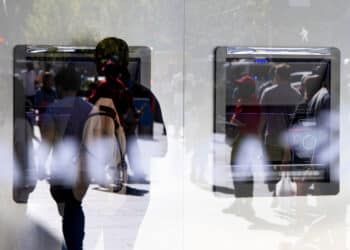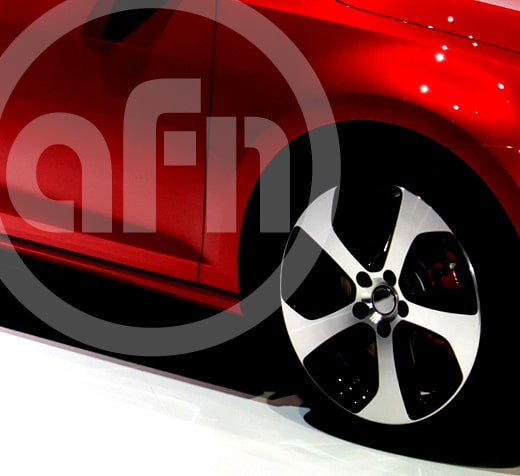Managing a Healthy BHPH Portfolio: Recency vs. Delinquency
I have heard how important keeping your accounts current is to the success of a portfolio of receivables. I would put that statement down the list four or five spots when discussing how well your Buy Here, Pay Here portfolio is performing. In Buy Here, Pay Here (BHPH) you need to manage your receivables portfolio differently. Why? Because in BHPH, many of your customers are going to have trouble keeping up with their payments; it’s simply the nature of the business, but one that with proper processes and oversight, is manageable and will provide an excellent return on your investment.
In my BHPH operations, I would tie a small bonus to the percentage of current accounts to help keep my collectors’ eyes on who is not paying as they should. When a collector has several hundred accounts to maintain, I want their focus on what is most important – cash flow. Because I feel cash flow is the primary bell weather of a successful receivables portfolio, I place higher priority on two other important receivables management metrics: recency and collection potential.
In a BHPH portfolio, your recency metric should generally remain, at a minimum, in the 90’s. This means 92 to 96 percent of your open accounts have made payment in the last 30 days. Collection potential is the amount of payments your portfolio has due each week based on contractual terms. This is the money, the life blood of your operation. If you are taking in 110% of total payment dollars due each week (average weekly payment times number of open accounts) while meeting your recency goals, you will see the performance anticipated from your portfolio and the cash flow you should expect.
There are other dollars coming in, of course: down payments, deferred payments, wholesales, service income, cash deals, payoffs and other services you may provide. Generally, I experienced 72 to 74 percent of my monthly cash flow as payments. My collectors’ largest incentives each month were tied to recency and collection potential. Both must be met to receive the bonus.
So many dealers I have worked with are very concerned about missed payments. Some of these dealers will repossess a vehicle one or two days after a payment is missed. My approach was different. I would make every effort to keep the vehicle with the customer. I would try to find ways to collect our money. Yes, if customers break too many promises or skip out then I would advise you go after the car. If the customer comes in and wants the car back, I’d give it to them. The customer and I would have a discussion beforehand, of course. My advice is to require proof of insurance and some money before they drive off, but not require everything that might be due. You want the customer to get the message that you are serious about getting your money, but you also know that if the car is on your lot the money isn’t going to come in, either.
Repossessions are a fact of life in BHPH. Don’t be fearful of them. Even though you will refer to repossessions as “losses” on your P&L, the aggregate of your repossessions should actually be profitable. Look at every deal like a hand of poker. The hand is dealt and must be played out. Folding might save you money but you’ve already made a big investment and you want to win. Winning is making profit on each deal. So stay with your customers as long as they are working with your collectors. Watch your exposure or “cash in deal” as you make decisions on delinquent accounts.
The bottom line in BHPH is that dollars through the payment window is the score to go by. Knowing how much should be coming in and tracking that number will be more important than if all of your accounts are current today or not. As long as you bring in more than what’s scheduled and all of your accounts paid you something this month, then you can focus your attention on your expenses and selling more cars.
Gene Daughtry teaches BHPH Service and Reconditioning Management for the NCM Institute. To learn more about management training for BHPH dealers and managers in sales, service and reconditioning, and underwriting and collections management, and to register for our next classes coming up in August and September, click the link below or call NCMi® at 866.756.2620.
I have heard how important keeping your accounts current is to the success of a portfolio of receivables. I would put that statement down the list four or five spots when discussing how well your Buy Here, Pay Here portfolio is performing. In Buy Here, Pay Here (BHPH) you need to manage your receivables portfolio differently. Why? Because in BHPH, many of your customers are going to have trouble keeping up with their payments; it’s simply the nature of the business, but one that with proper processes and oversight, is manageable and will provide an excellent return on your investment.
In my BHPH operations, I would tie a small bonus to the percentage of current accounts to help keep my collectors’ eyes on who is not paying as they should. When a collector has several hundred accounts to maintain, I want their focus on what is most important – cash flow. Because I feel cash flow is the primary bell weather of a successful receivables portfolio, I place higher priority on two other important receivables management metrics: recency and collection potential.
In a BHPH portfolio, your recency metric should generally remain, at a minimum, in the 90’s. This means 92 to 96 percent of your open accounts have made payment in the last 30 days. Collection potential is the amount of payments your portfolio has due each week based on contractual terms. This is the money, the life blood of your operation. If you are taking in 110% of total payment dollars due each week (average weekly payment times number of open accounts) while meeting your recency goals, you will see the performance anticipated from your portfolio and the cash flow you should expect.
There are other dollars coming in, of course: down payments, deferred payments, wholesales, service income, cash deals, payoffs and other services you may provide. Generally, I experienced 72 to 74 percent of my monthly cash flow as payments. My collectors’ largest incentives each month were tied to recency and collection potential. Both must be met to receive the bonus.
So many dealers I have worked with are very concerned about missed payments. Some of these dealers will repossess a vehicle one or two days after a payment is missed. My approach was different. I would make every effort to keep the vehicle with the customer. I would try to find ways to collect our money. Yes, if customers break too many promises or skip out then I would advise you go after the car. If the customer comes in and wants the car back, I’d give it to them. The customer and I would have a discussion beforehand, of course. My advice is to require proof of insurance and some money before they drive off, but not require everything that might be due. You want the customer to get the message that you are serious about getting your money, but you also know that if the car is on your lot the money isn’t going to come in, either.
Repossessions are a fact of life in BHPH. Don’t be fearful of them. Even though you will refer to repossessions as “losses” on your P&L, the aggregate of your repossessions should actually be profitable. Look at every deal like a hand of poker. The hand is dealt and must be played out. Folding might save you money but you’ve already made a big investment and you want to win. Winning is making profit on each deal. So stay with your customers as long as they are working with your collectors. Watch your exposure or “cash in deal” as you make decisions on delinquent accounts.
The bottom line in BHPH is that dollars through the payment window is the score to go by. Knowing how much should be coming in and tracking that number will be more important than if all of your accounts are current today or not. As long as you bring in more than what’s scheduled and all of your accounts paid you something this month, then you can focus your attention on your expenses and selling more cars.
Gene Daughtry teaches BHPH Service and Reconditioning Management for the NCM Institute. To learn more about management training for BHPH dealers and managers in sales, service and reconditioning, and underwriting and collections management, and to register for our next classes coming up in August and September, click the link below or call NCMi® at 866.756.2620.















